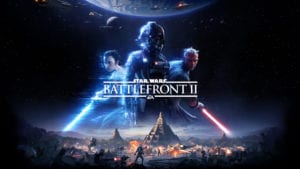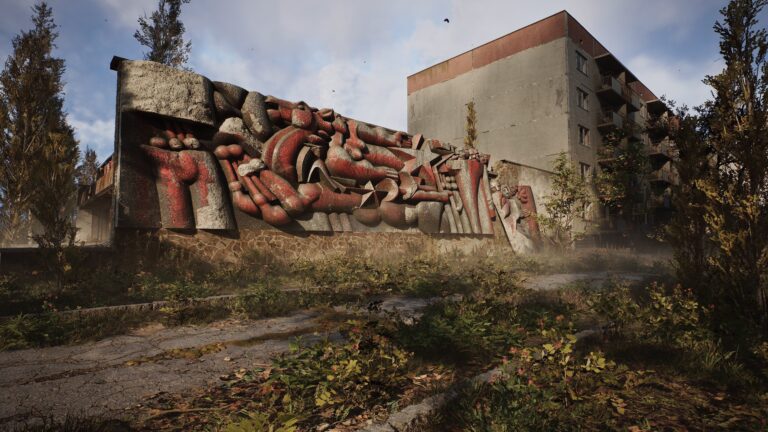2017 has been a great year for video game releases with several game of the year contenders. The year started off with amazing titles such as Resident Evil 7, The Legend of Zelda: Breath of the Wild, Nier: Automata, Persona 5, Horizon: Zero Dawn, Nioh, For Honor, Ghost Recon: Wildlands, Injustice 2, and Splatoon 2. The holiday season is also stacked heavily with Destiny 2, Marvel Vs Capcom: Infinite, Call of Duty: WW2, Wolfenstein 2, Super Mario Odyssey, Assassin Creed Origins and Star Wars: Battlefront 2 just to name a few.
This is a great time in the video game industry, but recently gamers have noticed a huge shift with publishers implementing loot boxes in several AAA games. A term has been coined for this trend: the “lootboxcalypse.” Gamers are starting to see the first signs of video games introducing loot box systems as an additional revenue source and the concept of “GaaS” (Games as a Service).
Bethesda in the last couple of years has found some success in marketing and financially supporting their games after launch. With the discussion of loot boxes and big publishers seeking to make GaaS games, it made me wonder: What about Bethesda?
This feature will be in two parts. This first part will consider the benefits and detriments of loot boxes to both publishers and consumers. The second part will explore GaaS, as well as Bethesda’s successes and failures with their IP.
What are Loot Boxes?
There is no dictionary definition for loot boxes, but there is a Wikipedia entry on them:
“In video games, a loot box is a consumable virtual item which can be redeemed to receive a randomized selection of further virtual items, ranging from simple customization options for a player’s avatar or character, to game-changing equipment such as weapons and armor. A loot box is typically a form of monetization, with players either buying the boxes directly or receiving the boxes during play and later buying ‘keys’ with which to redeem them”
Wikipedia isn’t the best source because of the nature of editing by other users, but this definition holds up well. Loot boxes are not a new concept. Some AAA games have implemented some sort of loot box system in games like Overwatch and Mass Effect 3. Loot boxes are a form of monetization that allows developers and publishers to maintain a small team to develop new content for a game.
Loot boxes can contain all sorts of virtual items for people to spend real-world money on in order to get a chance to acquire what they want. Overwatch’s loot boxes are all cosmetic items such as sprays, taunts, voice lines, or character costumes. Marvel Heroes Omega’s loot boxes can unlock brand new characters to play as, or new costumes. Call of Duty: Black Ops 3 also had loot boxes that included cosmetic items and new weapons. There are varying degrees of loot box implementation in all these games. Some are intrusive, while others are more subtle about advertising their boxes.
Loot boxes are profitable because they follow a similar monetization structure to that of free-to-play mobile games. EA’s Galaxy of Heroes made $147 million in mobile revenue in 2016.Most people will either spend nothing on a free to play game or less than $5. So who is spending that amount of money on free to play games? Whales.
Who or What are Whales?
Most people never spend a dime on loot boxes. The business model relies on “whales” to financially support the game. “Whales” are players who spend a majority of their money on free to play games and make up the top 1% of the player base. Check out this info-graphic about whales:
This research has presented that most whales are the same type of gamer who loves playing other hardcore console games. According to EEDAR’s Jesse Divnich:
“While the report focuses solely on mobile gamers and their playing habits, it is a fair statement that a portion of our top mobile spenders are part of the core console gaming community. It’s not surprising. Core gamers have been conditioned to spend money on traditional games and it is fair to assume this habit carries with them into to other gaming verticals. To this crowd, spending $1.99 to break a few jelly blocks in Candy Crush Saga is worth the purchase price. Or even $50+ is easily justifiable. They likely view it as an investment, as most hobbyists do.”
This is the biggest misconception that most people don’t know about. Whales aren’t just casual players who become addicted to loot boxes or some other form of monetization. Whales are usually the hardcore gamer who plays everything, the key factor being that they need to be the right age with disposable income. Most games will bar progression through a currency system or by unlocking loot boxes. Thus, whales spend huge amounts of money to bypass those progression stop gaps, even though 90% of the player base doesn’t mind it.
There is money to be made by adopting free-to-play monetization tactics in the current AAA gaming market. Gamers are seeing a big push from publishers to adopt this model in multiplayer and single player games. Making video games at the AAA level is expensive once you consider several factors like studio space, employee salaries, marketing, commercials, etc.
Like any other industry, publishers are in the business of making money. Movie studios are trying to find their “franchise” hit in order to follow tent-pole blockbusters in this super hero era. The video game industry is a hot market to make millions of dollars, but also a big investment to play on an worldwide stage. Even big organizations like the Vivendi are trying to buy publishers like Ubisoft through hostile take-overs, rather than build a brand from the ground up. 2017 has seen the rise of the Nintendo Switch and amazing games, but some will remember 2017 as the year of the LootBoxcalypse.
Is the LootBoxcalypse real?
Loot boxes aren’t new when considering free-to-play mobile games, free to play PC games like Heroes of the Storm, or the previously mentioned games on consoles. However, there is a growing concern about how loot boxes can affect a game’s design to make consumers spend more money on top of their initial purchase. Make no mistake that video games are cheaper in today’s economy. Most customers buy a brand new video games for $60, but that is only the initial purchase for the base game. Season Passes and additional downloadable content (DLC) are made to get more money out of customers and devalue games on the pre-owned games market.
Star Wars: Battlefront may be the best example of what the true cost of the “full” experience is. The game costs $60, but to get the full experience people are forced to buy a $50 Season Pass. So in order to enjoy the first Battlefront and everything it had to offer meant spending $110. However, only a year later an “Ultimate Edition” that included everything came out for only $39.99, a slap to the face for early adopters.
Loot boxes are a great way for publishers to gain additional revenue, but how these loot boxes are implemented is what’s causing fear among customers. Some loot boxes simply contain add-ons like cosmetic items, which were previously available in games without the added monetization. Destiny allowed players to collect permanent shaders to change the look of their armor; this feature was tweaked for Destiny 2. Shaders are now consumable items that players have to collect and earn or spend actual money to buy “Bright Engrams” that contain unique shaders and other cosmetic items. Destiny 2 players raged about the changes and blamed Bungie for implementing money grabbing tactics; the actual result wasn’t as bad as people had initially feared, but it doesn’t bode well for the AAA market.
There is real fear of AAA games being made only to attract whales and catering games to those select few. Middle-Earth: Shadow of War is a single player game that includes loot boxes to gain Orc followers and other powerful items. Forza 7‘s loot boxes, as stated by Arc Technica, have “pay to earn” prizes which allow players to earn more credits through loot boxes. Star Wars: Battlefront II will also contain loot boxes and is the only game that bares the symbol of “pay to win” boxes.
There are four AAA games coming out this holiday season that will include some sort of loot box monetization. Shadow of War‘s loot boxes were blown out of proportion with fake rumors about only obtaining legendary orcs through paid boxes. Battlefront II‘s loot boxes are the worst kind because they allow players to gain a clear advantage over non-paying players. The beta for Battlefront II gave players a sneak peak at loot boxes that unlocked new abilities and better guns, giving players who fork over extra cash a big advantage in a multiplayer matches. While beta players weren’t able to access everything, there were hints of some abilities being overpowered, and people who can buy loot boxes are looking to have a huge advantage in a multiplayer games. For more information watch TotalBiscuit, who has a great video detailing the abilities in Star Wars Battlefront II.
EA has responded to these allegations and promises to adjust the rate of players obtaining new abilities to balance the multiplayer.
The lootboxcalypse might not be real, but gamers have to be careful and honest in the discussion of micro-transactions. Some people don’t mind spending some extra cash on the games they love. Some people believe that micro-transactions are the anti-Christ and should be defeated as soon as possible. The truth is somewhere in the middle, and only time will tell which loot box implementations are the best or worst. Micro-transactions are a great source of revenue for publishers who want to create bigger and engaging open worlds. Micro-transactions are a trend that came from mobile gaming and is now making a bigger statement in 2017 through several holiday blockbuster games.
The mobile market may have found success using these methods, but those digital storefronts are now suffering because of saturation. The business model of free-to-play mobile games is a race to the bottom with only a small percentage of games making any kind of profit. Publishers like Capcom tried to follow the gold rush of mobile games only to dissolve their mobile subsidiary because they didn’t see the return they were hoping for. EA Mobile is finding great success in the mobile market, and it’s not surprising that their biggest tent pole games, Mass Effect: Andromeda and Star Wars: Battlefront II, contain loot boxes.
Is the lootboxcalypse real? No, or it’s simply too early to tell. Bethesda is a publisher with several single-player gaming experiences that hasn’t followed this trend, or at least not yet. This year alone they’ve released Prey, The Evil Within 2, and Wolfenstein 2.
Keep an eye out for part 2 “The Lootbox Surge: What About Bethesda” next week, and let us know in the comments what you think about loot boxes and the lootboxcalypse.
No related posts.









I stick by what I’ve always said; loot boxes aren’t gambling, but on the topic of “paying on top of the initial game,” this is what I really dislike about today’s game market.
I feel absolutely cheated whenever you need to buy a DLC to know the full story, if the game devs start going this route, where I can’t enjoy my games without having to pay more for extra content, then I would rather quit playing than be milked.